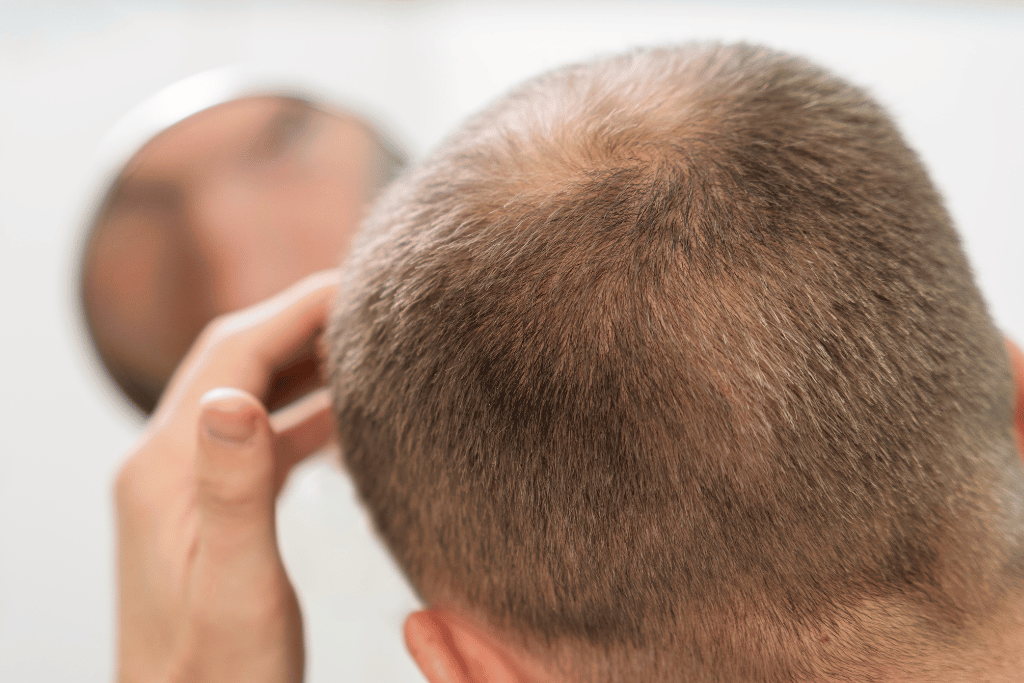
Causes, Treatments, and Future Prospects
Hair Medical Restoration
Is the most common form of hair loss that affects both men and women. It is a progressive condition characterized by a gradual thinning of hair in specific areas, primarily the crown and temples in men, and overall thinning of the hair in women.
The primary cause of androgenetic alopecia is a combination of genetic and hormonal factors. Here are the causes of androgenetic alopecia:
Genetic Predisposition
Androgenetic alopecia tends to run in families, suggesting a strong genetic component. Certain genes inherited from either or both parents can make individuals more susceptible to hair follicle sensitivity to dihydrotestosterone (DHT).
Hormonal Factors
Androgenetic alopecia is influenced by hormones, particularly dihydrotestosterone (DHT). DHT is a byproduct of testosterone, and individuals with androgenetic alopecia have hair follicles that are more sensitive to the effects of DHT. This sensitivity leads to the shrinking of hair follicles, shorter hair growth cycles, and eventual hair loss.
Age
Androgenetic alopecia often becomes more noticeable and prevalent with age. It commonly starts during or after puberty in men and post-menopause in women. The age-related hormonal changes contribute to the progression of hair loss.
Other Factors
Several other factors can contribute to or exacerbate androgenetic alopecia, including stress, certain medications (such as anabolic steroids or medications that affect hormone levels), underlying medical conditions (e.g., polycystic ovary syndrome in women), and environmental factors.
In men, androgenetic alopecia typically begins with a receding hairline, followed by thinning at the crown. Over time, these areas may merge, resulting in complete or near-complete baldness. In women, the pattern is different, with overall thinning of the hair rather than specific areas of baldness. Women may also experience widening of the center part or a more visible scalp.
Androgenetic alopecia can have a significant impact on an individual's self-esteem and psychological well-being, leading to feelings of self-consciousness and emotional distress. While there is no cure for this condition, there are several treatment options available to manage and slow down hair loss.
The most commonly used treatments for androgenetic alopecia include medications such as Minoxidil, Dutasteride, Finasteride among others. Minoxidil can be found in tablets or topical solution and it helps to stimulate hair growth by increasing the blood flow to the follicle and that way it slows down the progression of hair loss. Finasteride is an oral medication that blocks the conversion of testosterone to DHT, thereby reducing the effects of DHT on the hair follicles.
In addition to medication, other approaches such as hair transplant surgery and low-level laser therapy (LLLT) are also utilized to restore hair growth in affected individuals. Hair transplant surgery involves transplanting healthy hair follicles from one part of the scalp to the thinning or bald areas. LLLT uses red light therapy to stimulate hair follicles and promote hair growth.
It's important to note that the effectiveness of these treatments can vary from person to person, and they may not work for everyone. Early intervention and seeking medical advice from a hair specialist are crucial in managing and treating androgenetic alopecia.
Overall, androgenetic alopecia is a common form of hair loss that can significantly impact an individual's appearance and emotional well-being. While there is no definitive cure, various treatment options can help slow down hair loss and stimulate hair regrowth, providing some relief for those affected by this condition.
To obtain more personalized information, it is necessary to go to a consultation with one of our specialists in hair care. Hair Medical Restoration together with Dr. Jorge Cortez, offer online or face-to-face consultations to determine your specific case about the procedure. They will perform an analysis considering your circumstances, providing fully personalized advice based on your experience and expectations.



